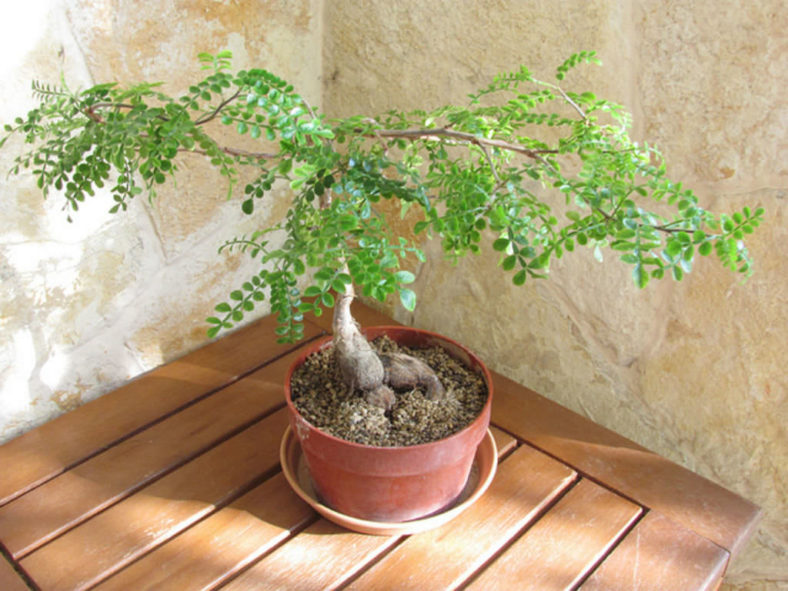Operculicarya decaryi, commonly known as Elephant Tree, originates from Madagascar and, like most plants from this island, has many unique and exotic characteristics. This plant is a "natural" bonsai. It quickly develops a thick, stout trunk, and its roots swell to form unique, contorted, and twisted designs. The leaves are tiny, which works proportionally for that bonsai look. They can vary from green in part shade to a copper-bronze in full sun. Trunk texture can range from semi-smooth to an extremely bumpy-knobby look.
Elephant Tree is dioecious, meaning that plants are either male or female, and they bloom accordingly. Therefore, you must have a male and female plant to produce seeds.
Operculicarya decaryi was first described in 1944 by Joseph Marie Henry Alfred Perrier de la Bâthie (1873-1958), a French botanist who specialized in the plants of Madagascar. The specific epithet of this species honors the plant collector Raymond Decary.
Growing Conditions and General Care
The Elephant Tree is quite a vigorous plant, and because it grows in rather harsh conditions, it is a relatively adaptable species. This plant is drought-tolerant and thrives in full sun in most locations. However, it cannot tolerate freezing conditions.

This plant does not require an enormous amount of water, but it can benefit from moderate watering during the growing season. Water a bit more regularly if in a container. Its roots will swell underneath the soil; you will only know that when you repot the plant.
Plants will be more or less deciduous in cold winters but remain evergreen in warmer locations. Avoid watering during periods of dormancy.
Like most caudiciforms, this plant enjoys fast-draining potting soil. Avoid peat if possible, and amend the soil with drainage material such as pumice, expanded shale, perlite, or a similar product.
Trim out interlocking or twiggy branches to keep the plant neat.
Propagation
Elephant Tree can be grown from cuttings or seeds.
The more practical method of propagating this caudiciform is to break off a piece of its winding tuberous root. In about three weeks, tiny leaves will form off the tip. The leaves are beautifully complex, and it is enjoyable to watch them develop from a root that resembles a small potato. Do this in the spring or early summer, while the plant is waking up from its winter dormancy. Otherwise, they may rot.
Seed-grown plants produce better-looking roots that can be exposed as your plant grows. Also, seedlings will carry these traits by choosing parent plants with certain characteristics, like the extremely "bumpy" trunks.
Source: baetanical.com
Links
- Back to genus Operculicarya
- Succupedia: Browse succulents by Scientific Name, Common Name, Genus, Family, USDA Hardiness Zone, Origin, or cacti by Genus